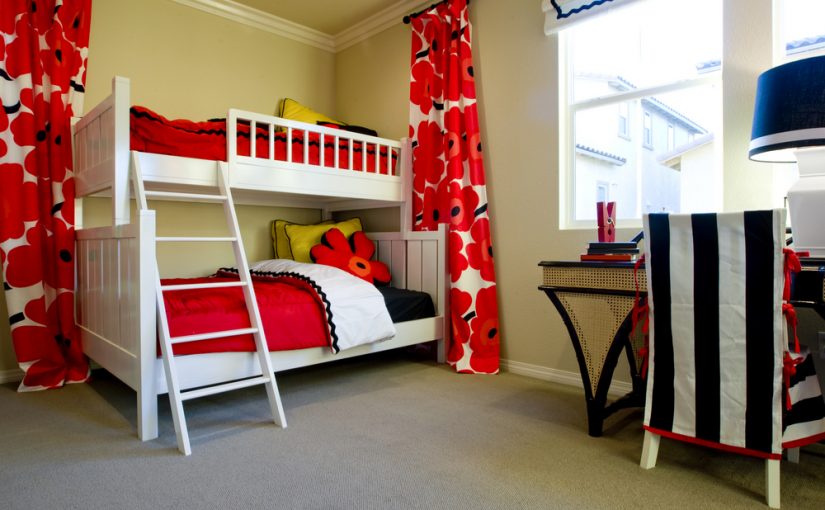Design Tips For Your Children’s Room
There are many ways you can keep your kids room vibrant, well-organized and inspired. The following tips will give you some great ideas you can use to handle this in a more creative way:
• First of all, you should keep in mind that colors play a huge part in the overall ambiance of a room so; in this case, you might want to stick to the more soothing hues. You can work with colors such as lavender or soft, warm colors. These will help your kids sleep well and relax when they’re not running about the place.
• You can put up a sturdy piece of art or a favorite photo of you and your little ones and finding a cool frame at a garage sale or resale shop. You can take a photo of a favorite place you’ve been together, enlarging it and cutting it to smaller pieces you can frame and then hang up on the wall.
• You can also use chalkboard paint to create a giant blackboard where your kids may draw with chalkboard or some washable markers. You can see if you can buy some re-purposed school lockers to add to the corner or you could just go with a less school-oriented furniture piece.
• You can also create a nice reading corner for your kids complete with their own bookcase, a good light and some comfy seating.
• Buy some frames and use them to showcase the best art works of your child in their room. This will serve a dual purpose of function and decoration, as they will have a chance to feel your pride in their creations.
• You can use a number of organizers with multiple pockets to hang on a closet door. This will help your kids store their trinkets and smaller objects without having a huge number of them on display around the room or on the floor, ready to step on.
• You can help improve the storage closet by installing a mirror, light boxes and some magnetic boards. These will help with their projects or just having fun in general.
• Your kids will also need a nice and comfortable study space where they can deal with their homework in peace. This will greatly help with school in the long run.
• You can stock a number of cubbies with any supplies your kids may need at school or at home. These will allow them to access everything with ease, while at the same time keeping it simple and even mobile when needed, depending on what the cubby looks like. One with pull-out bins would be excellent for this situation.
• Try getting creative and make your own DIY storage solution. Whether its bins made of something you have at home or another way, it can be a fun project for you to enjoy with your kids.
For further tips visit: Chiswick cleaning services




















